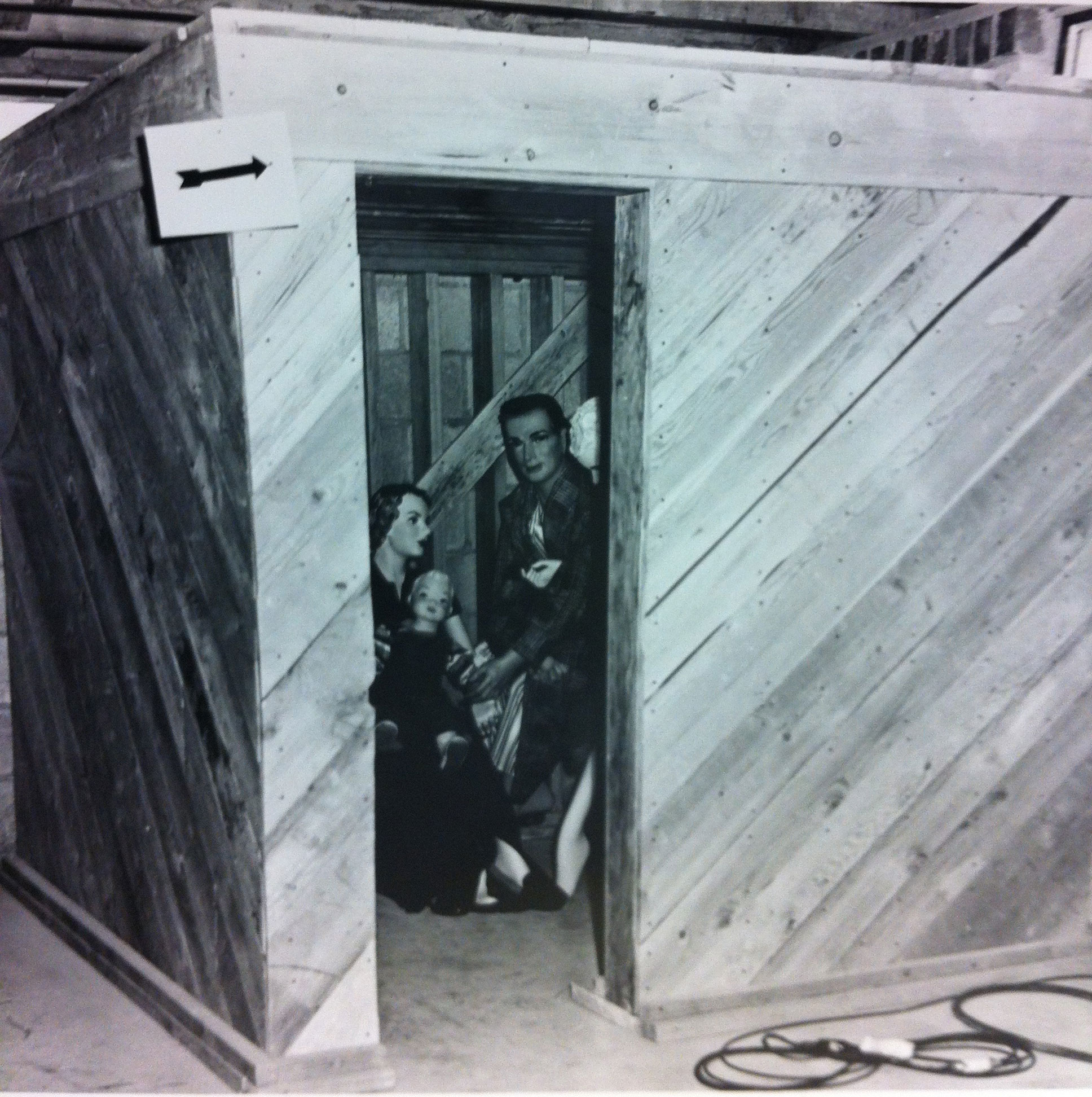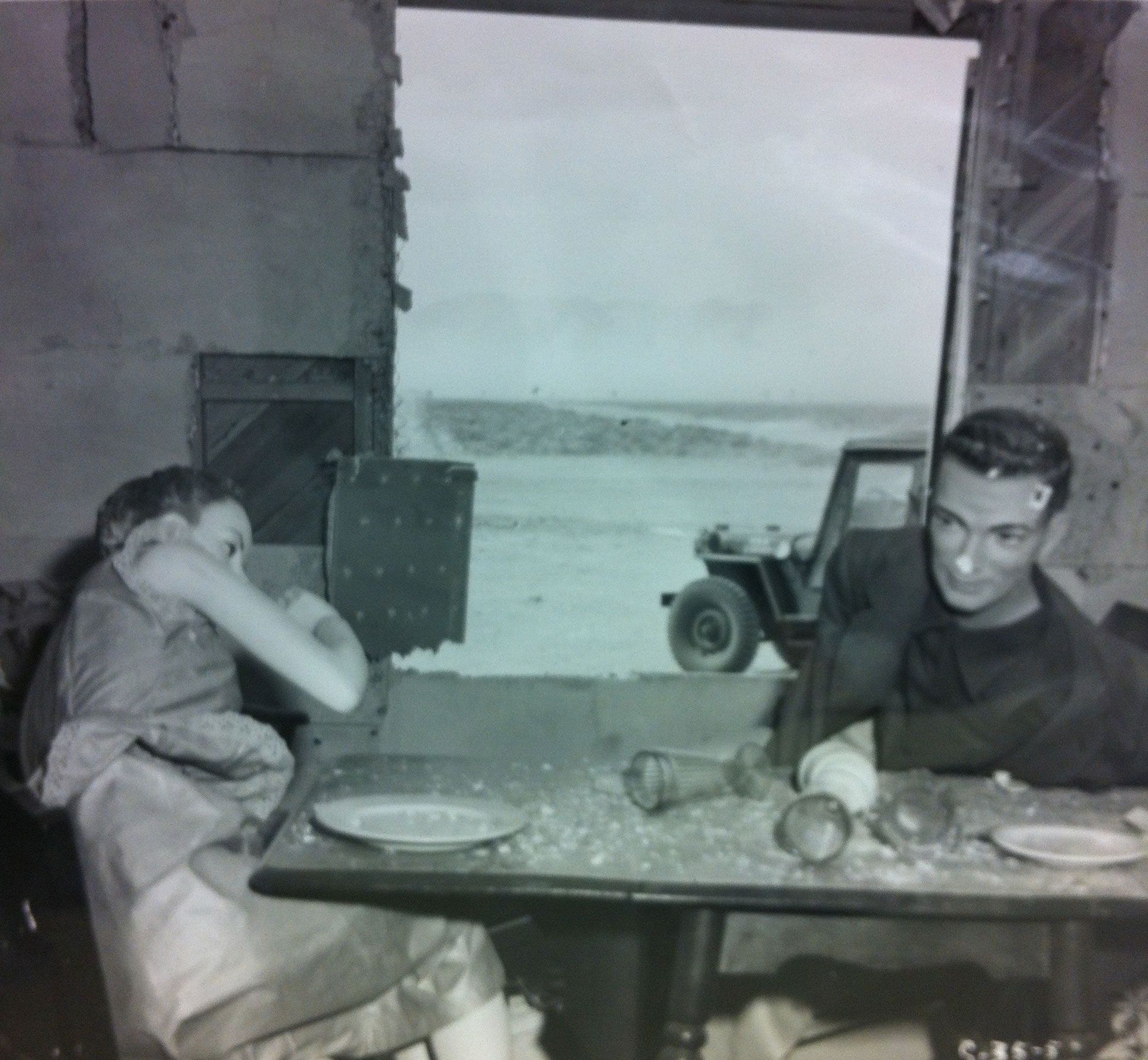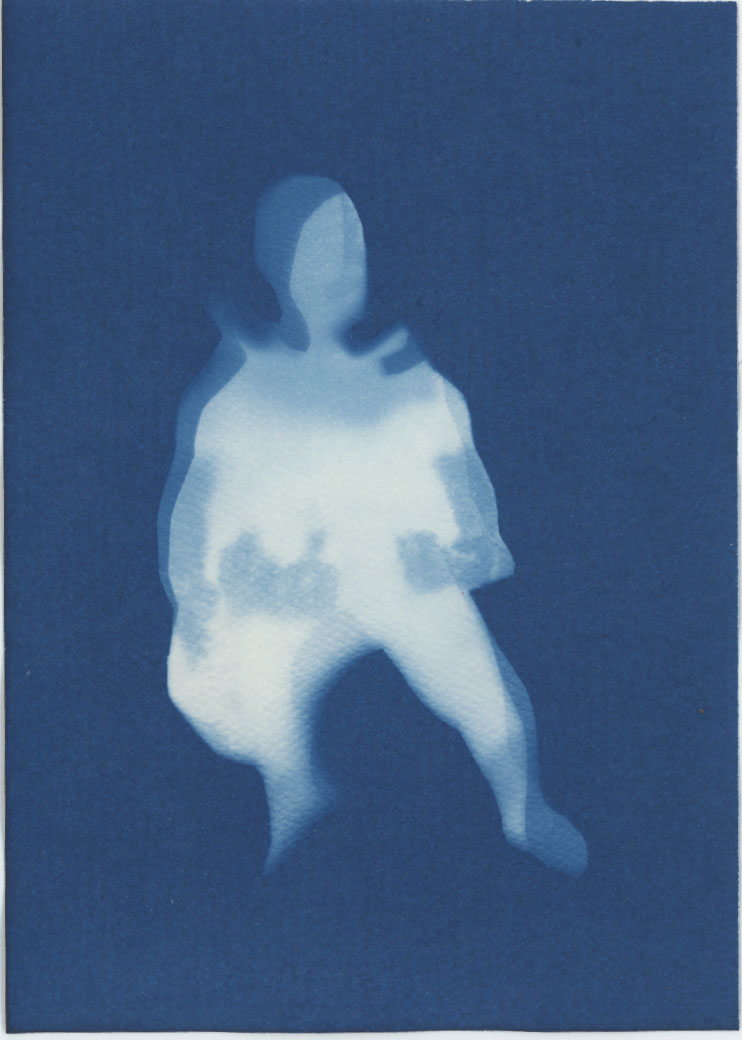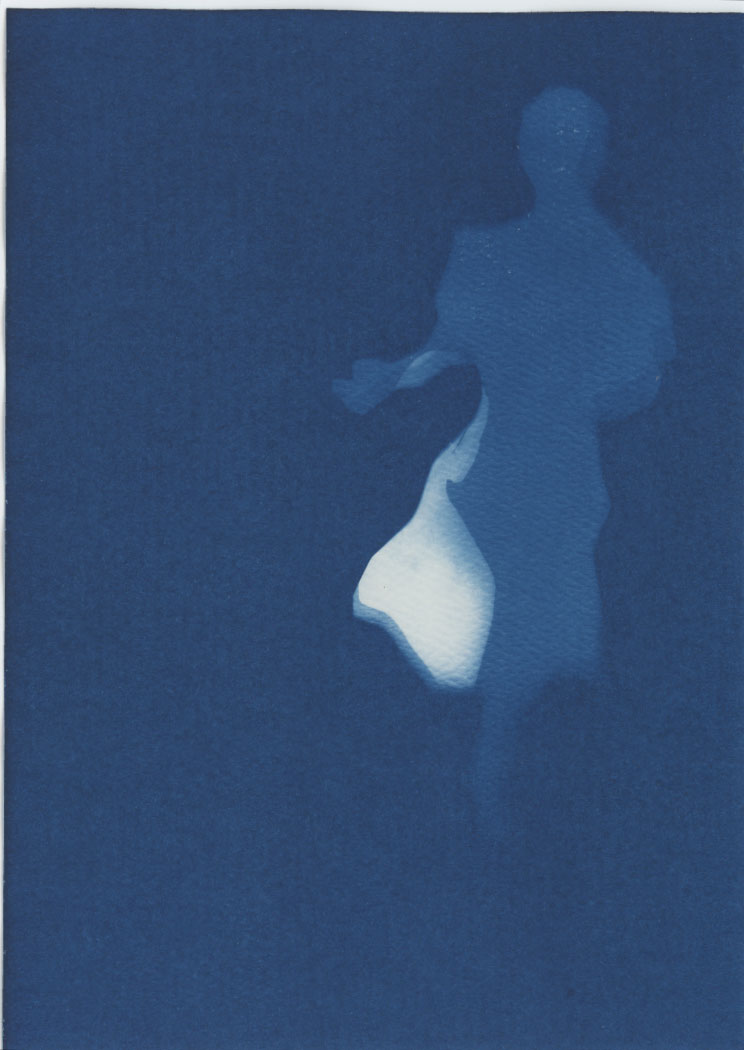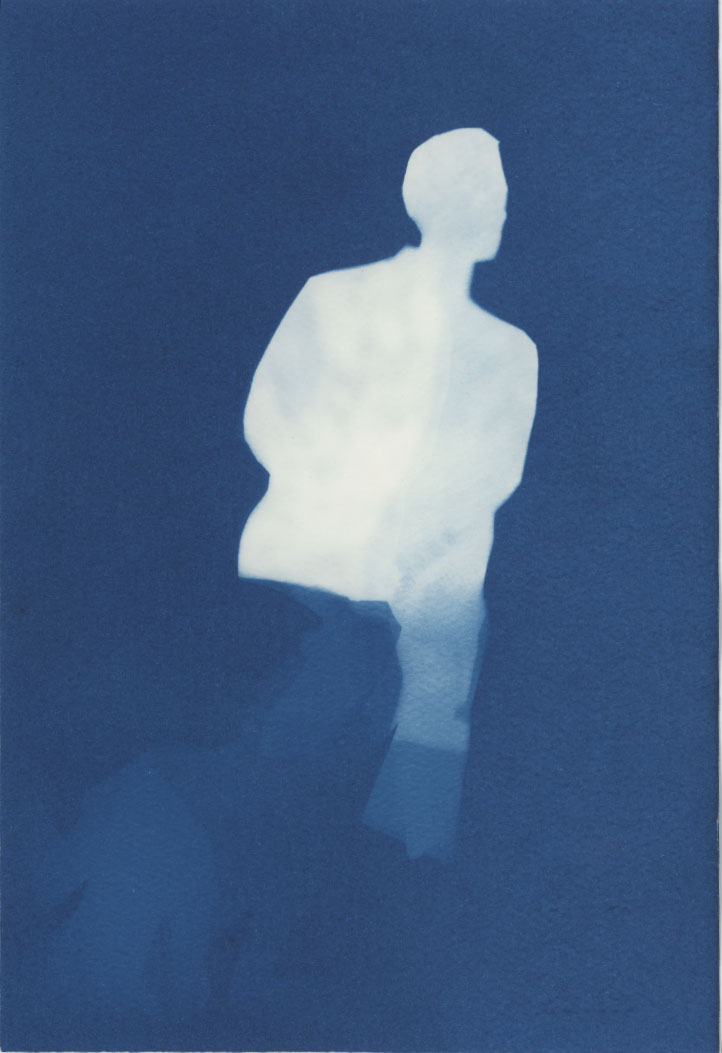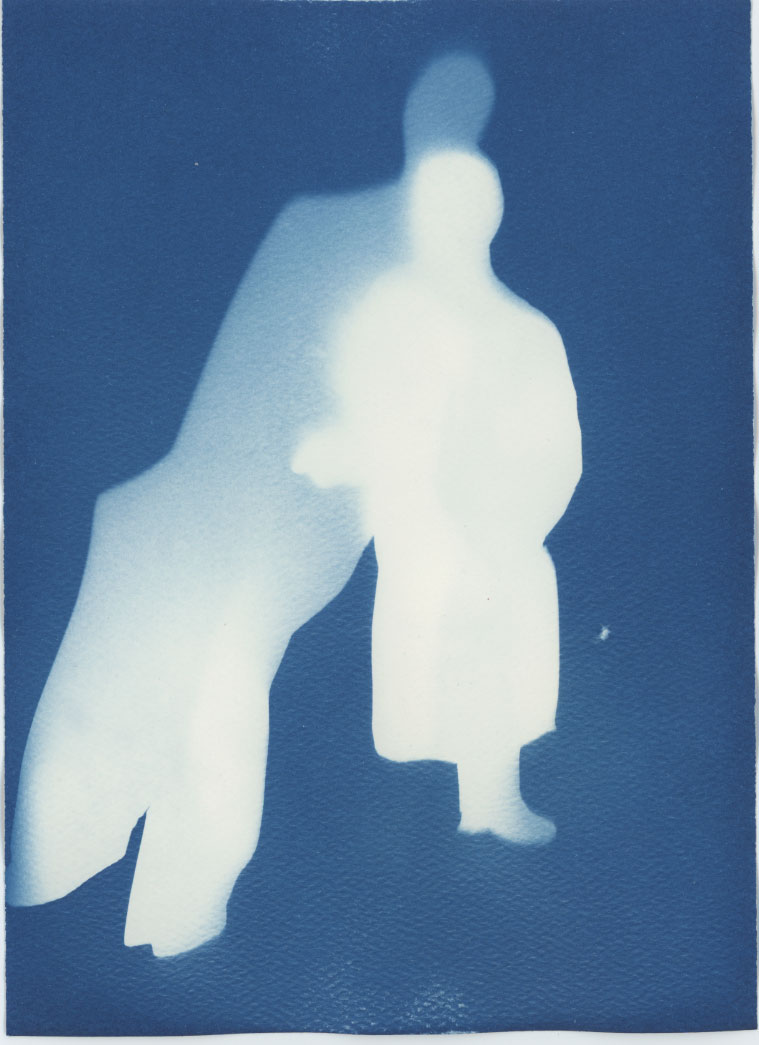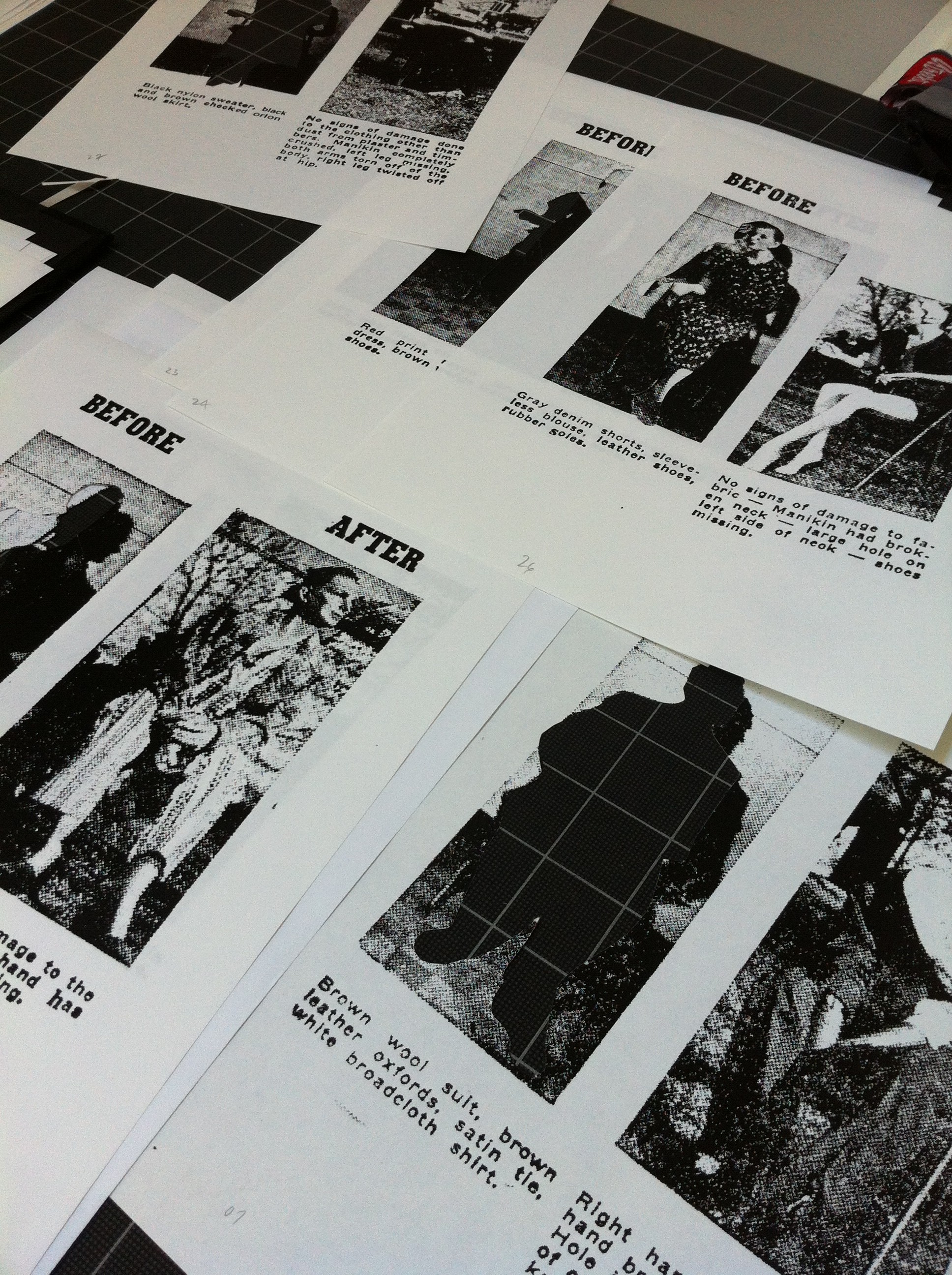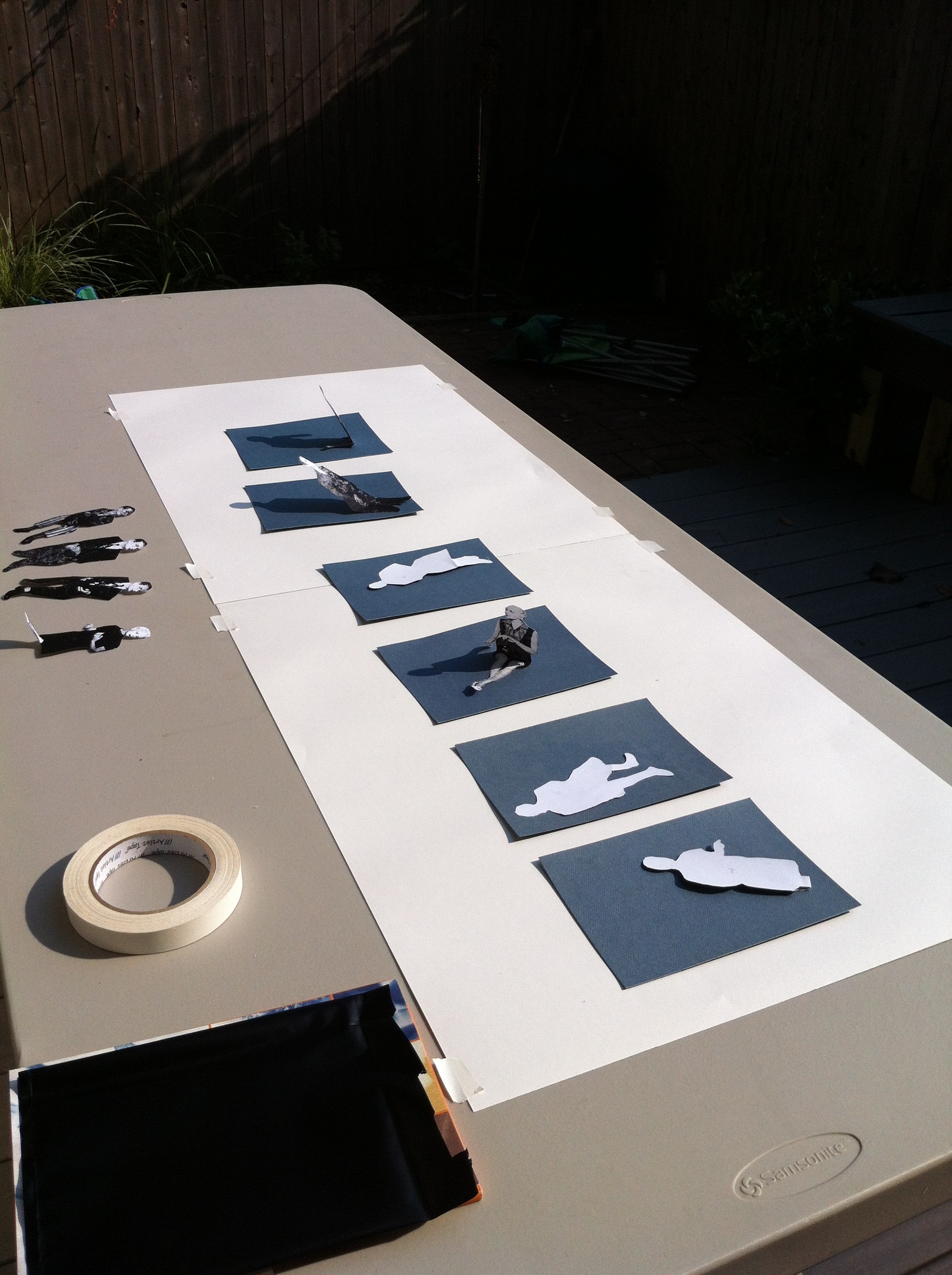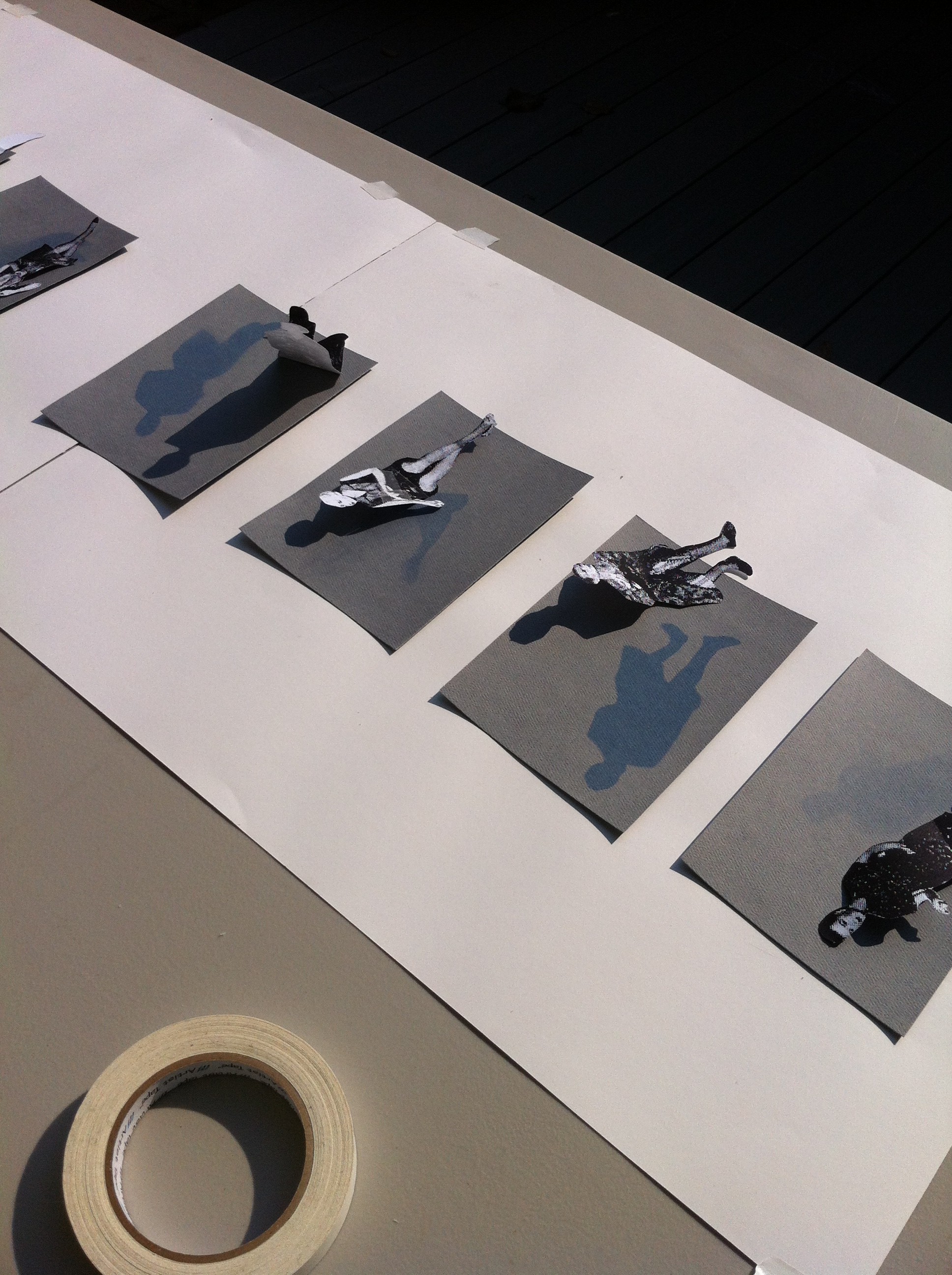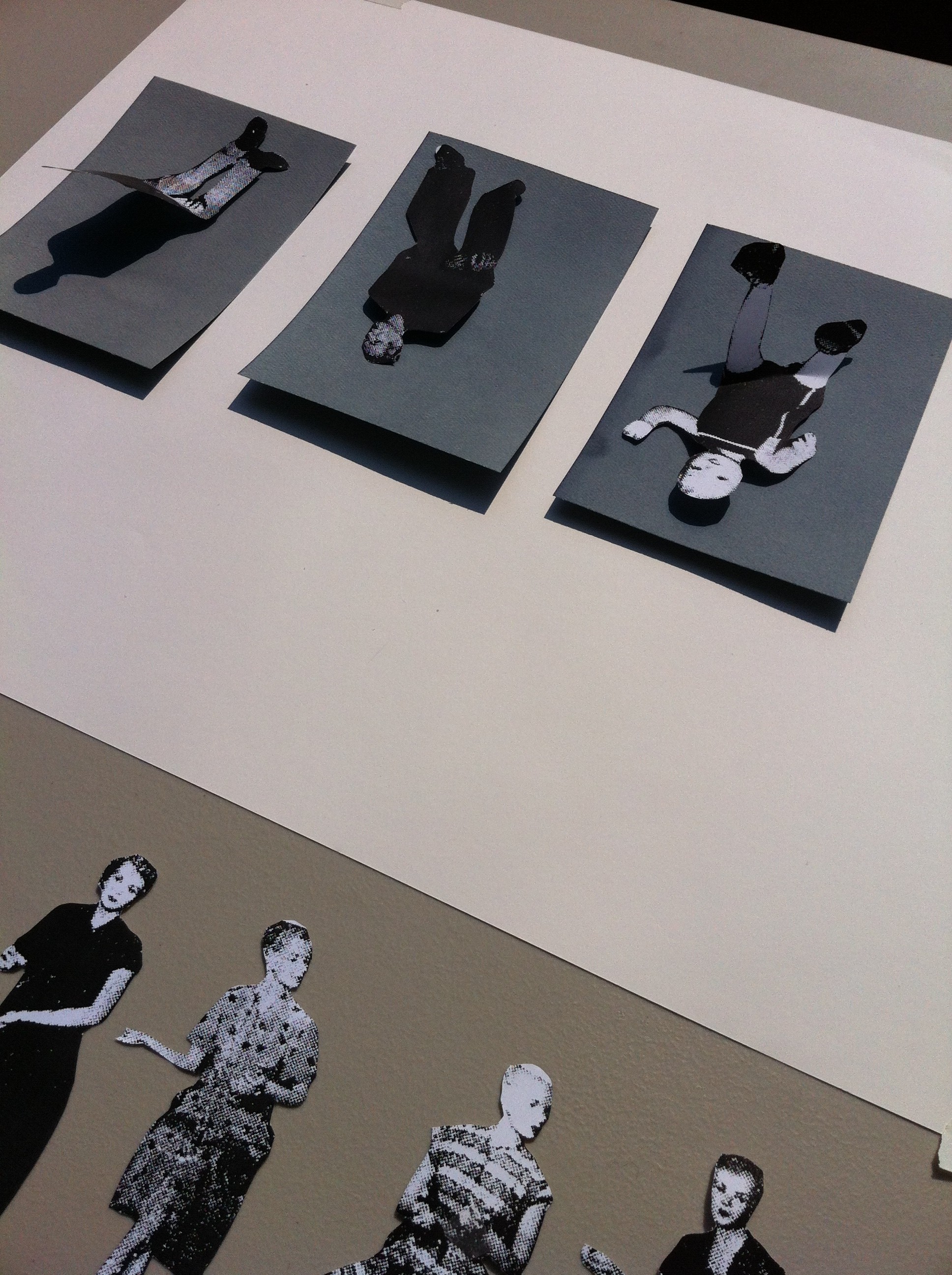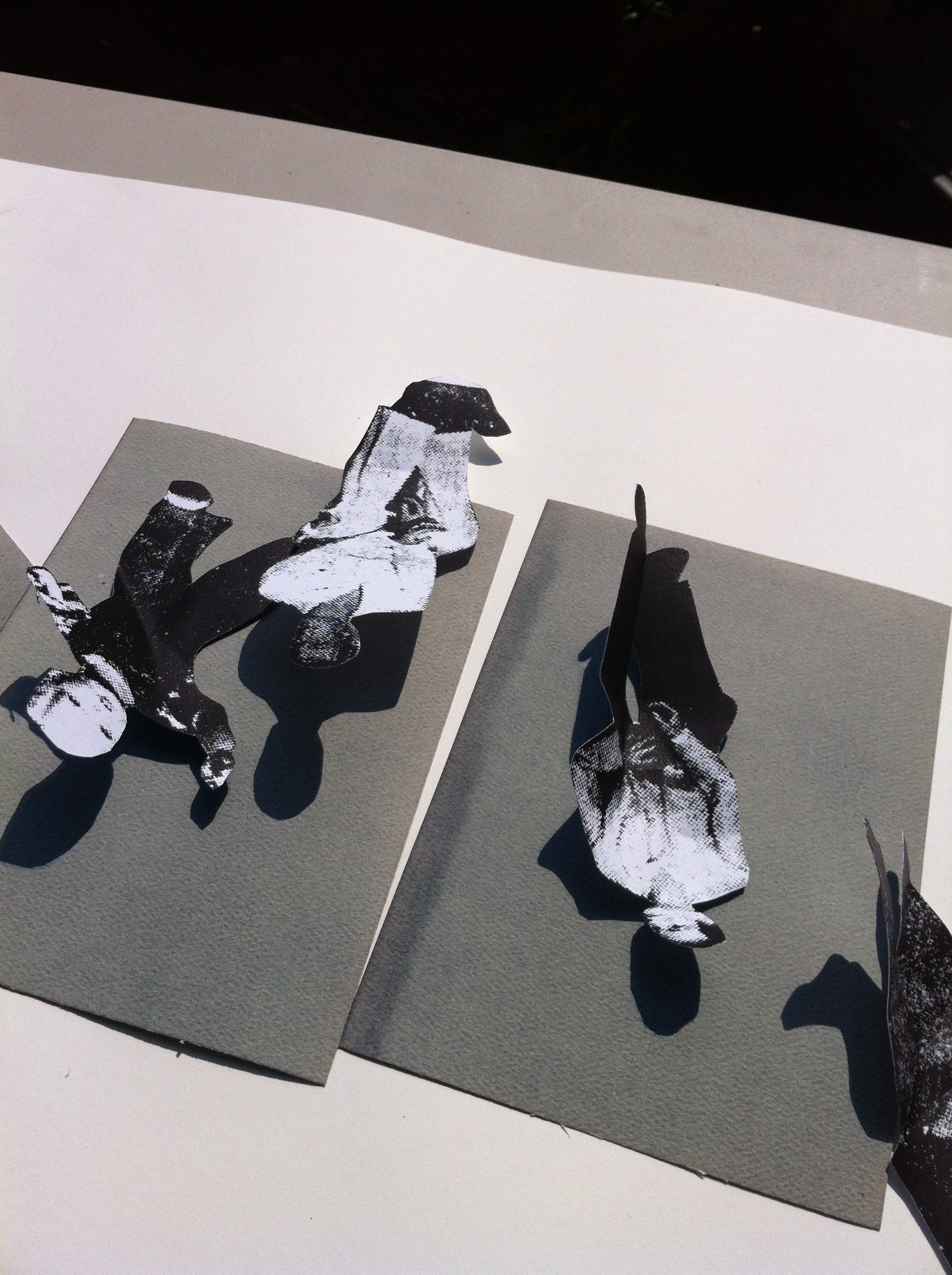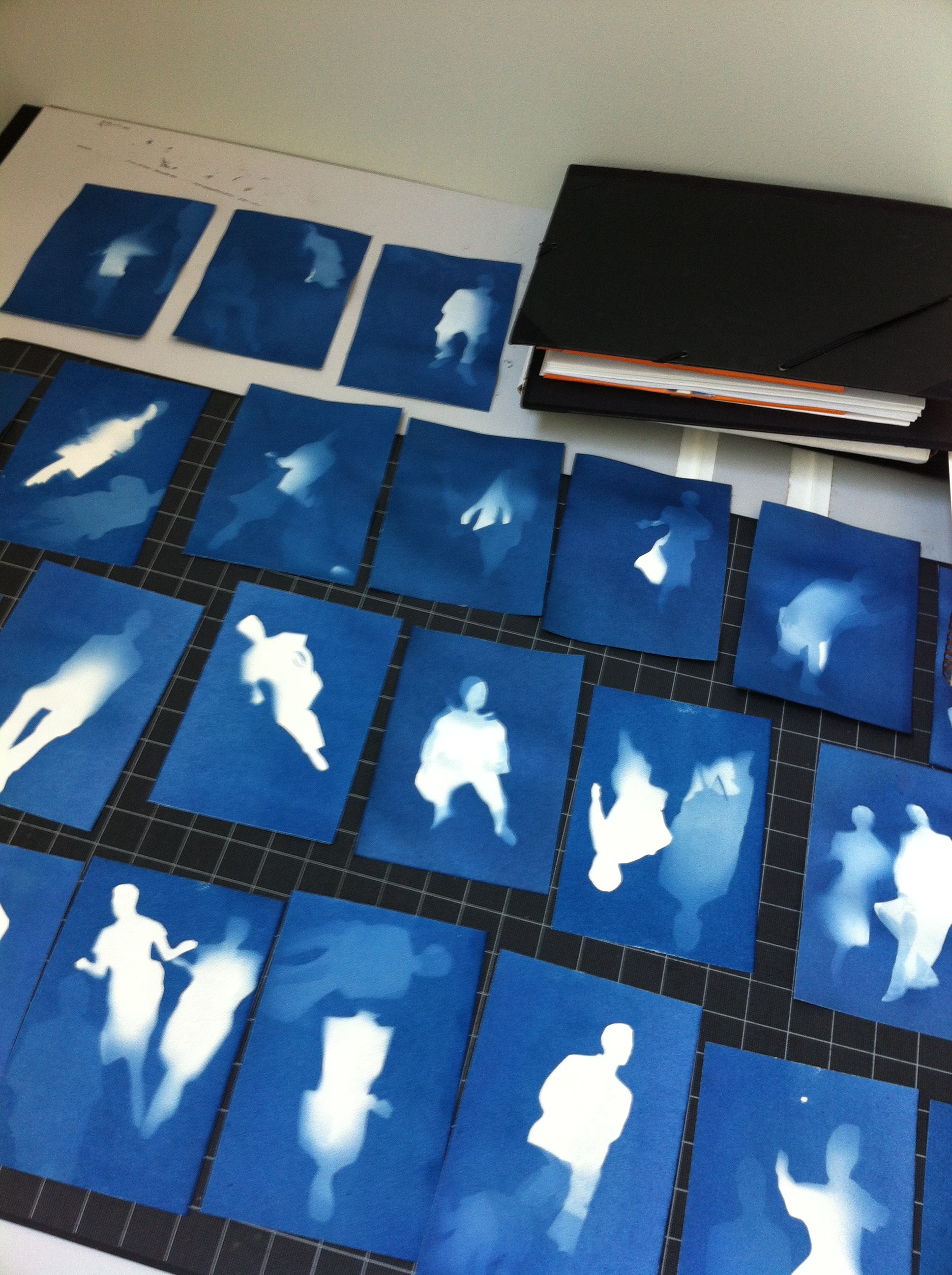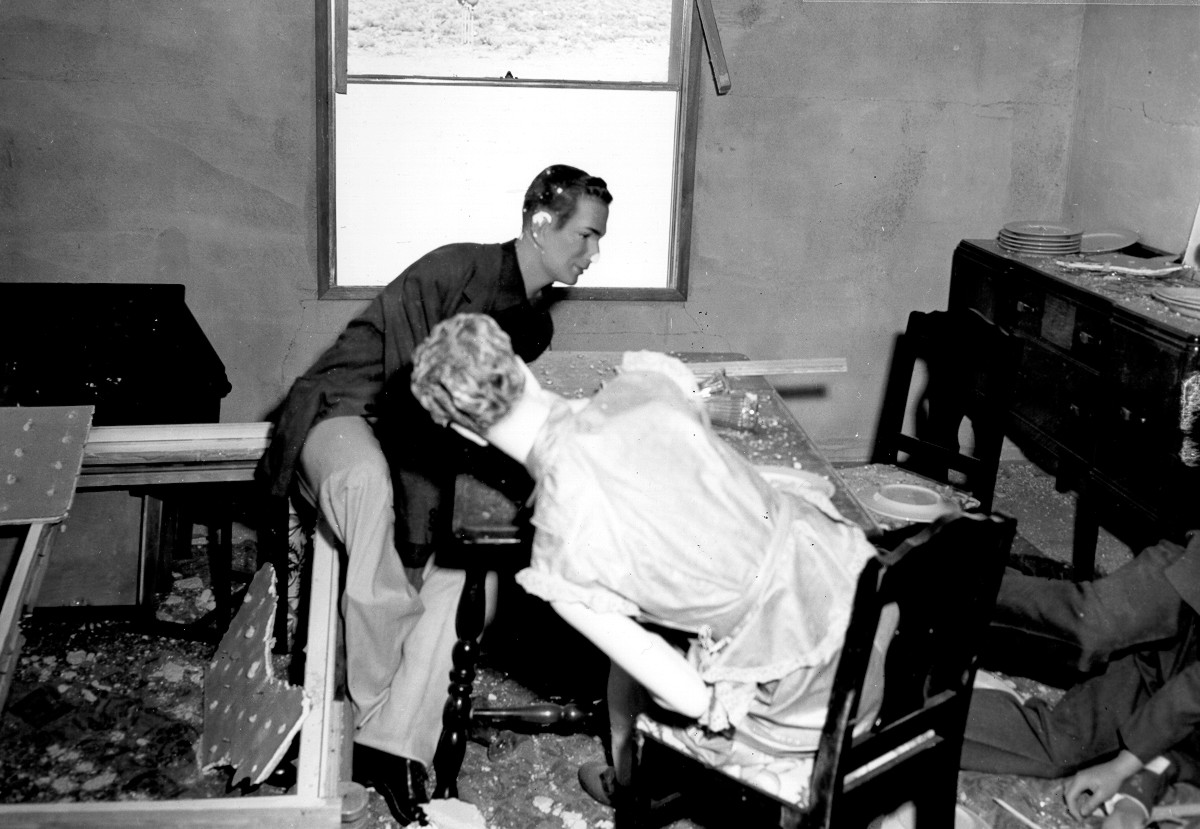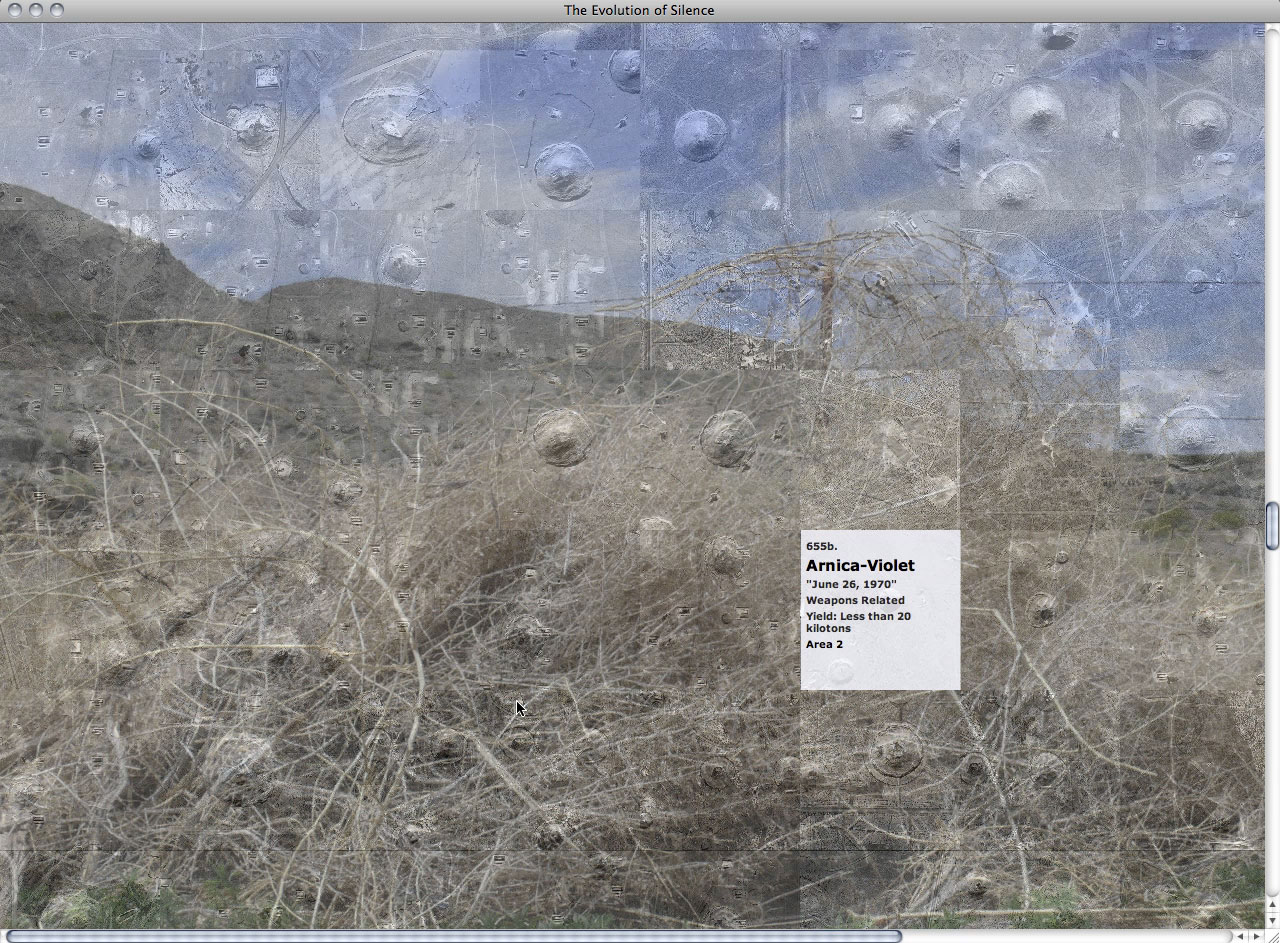
An exploration of memory and destruction, ‘The Evolution of Silence’ is a multi-dimensional project that encompasses drawing, interactive design, mapping, printmaking, and installation. It is a creative investigation into the dramatic transformation of the Yucca Flat valley of the Nevada Test Site (Nevada National Security Site)—the site of experimental, post-World War II nuclear detonations.
I am creating a web-based archive, installation, and publication that present an exploration of a restricted landscape, and a visual mapping and interpretation of its destruction. ‘The Evolution of Silence’ allows one to bypass government boundaries and control of the area, making it possible for any individual to experience a cold war’s aftermath and silence.
The project gives form and expression to the data that I have gathered and organized, and is unique to other existing documentation of the Nevada Test Site in that it preserves an individual view of every nuclear detonation that occurred in Yucca Flat valley (828 nuclear explosions in total). The valley’s pockmarked surface of sink-hole craters is simultaneously beautiful and horrific. Considering the toll on the environment and the cost to human life, the valley is an important symbol of the impact of war.
I have been working on ‘The Evolution of Silence’ for a few years. The University of North Carolina at Charlotte funded my initial field research in 2008 (thank you), and since then, I have been working to design and develop an experience of a place of conflict for others. Thanks to The University of the Arts in Philadelphia, I have a sabbatical for the Fall 2012 semester and am going to be finishing Part 1 of the project: a web-based archive that presents multiple perspectives and experiences of the destruction. Part 2 will take place in 2013, as I prepare for the project’s extension and arrange for its public exhibition.



















